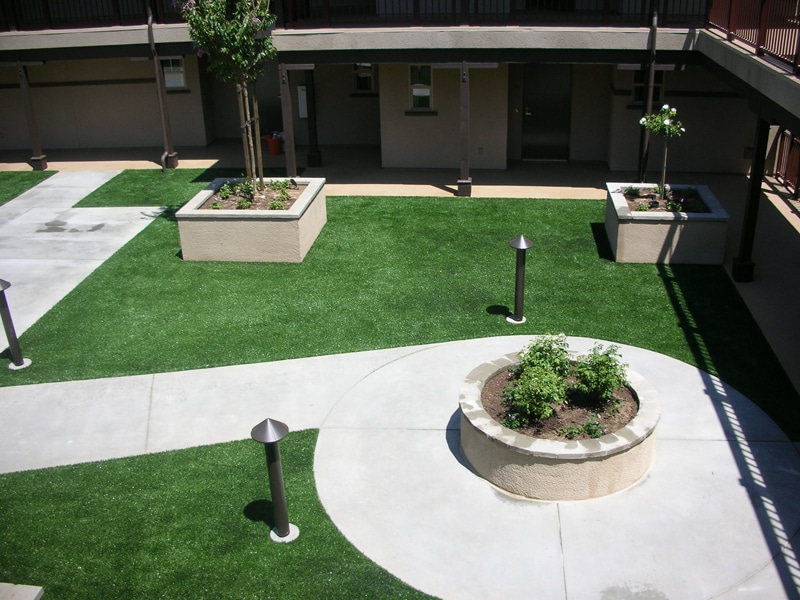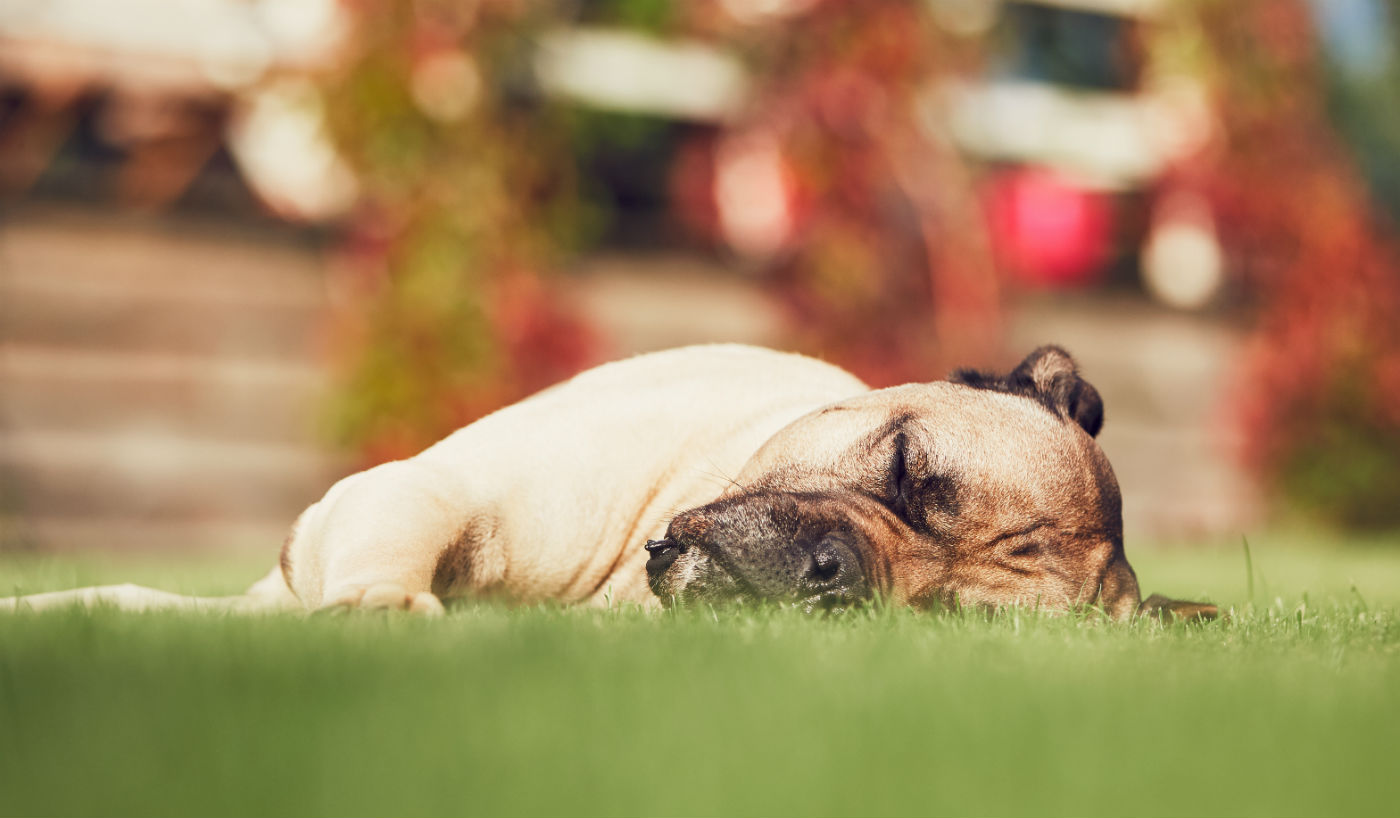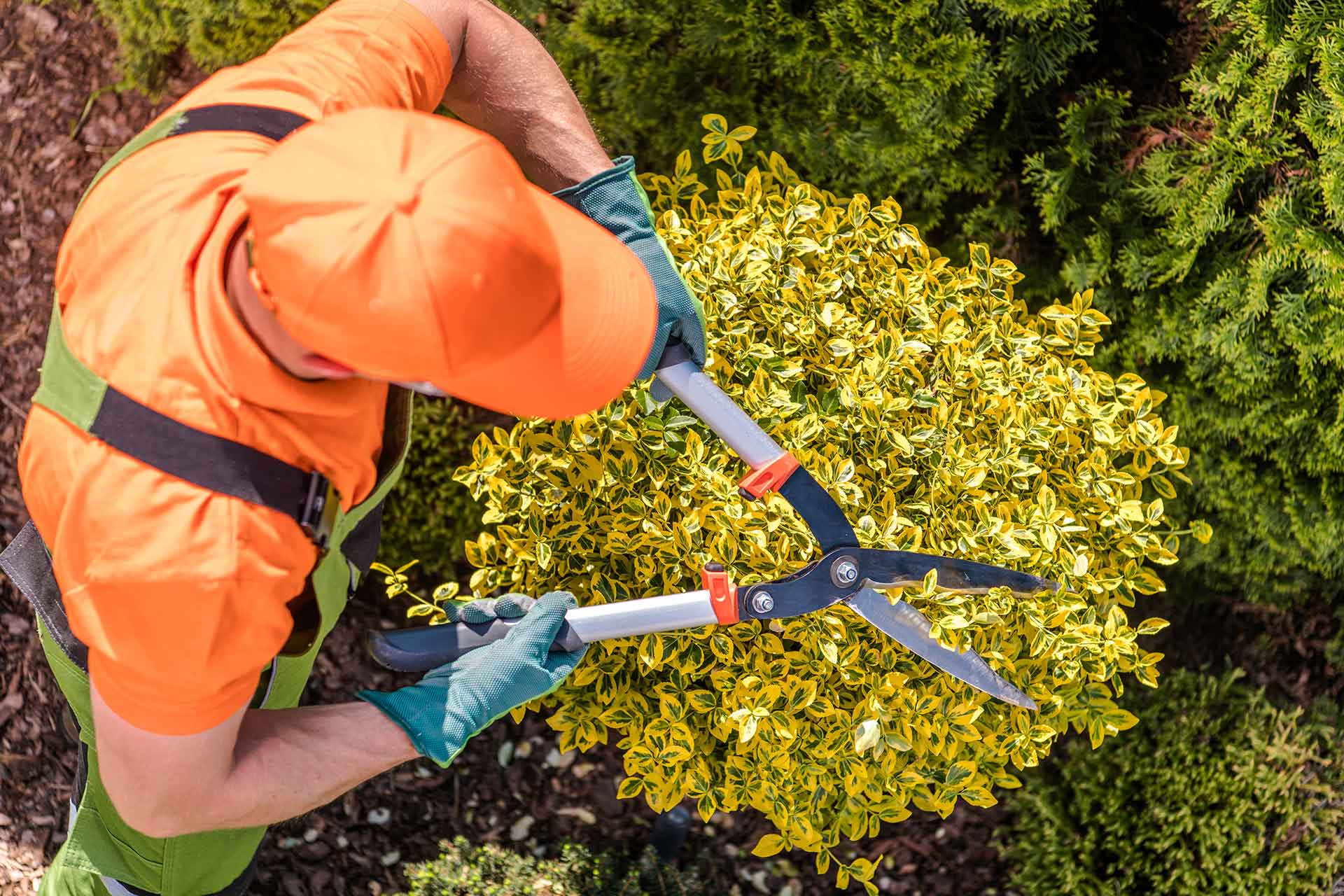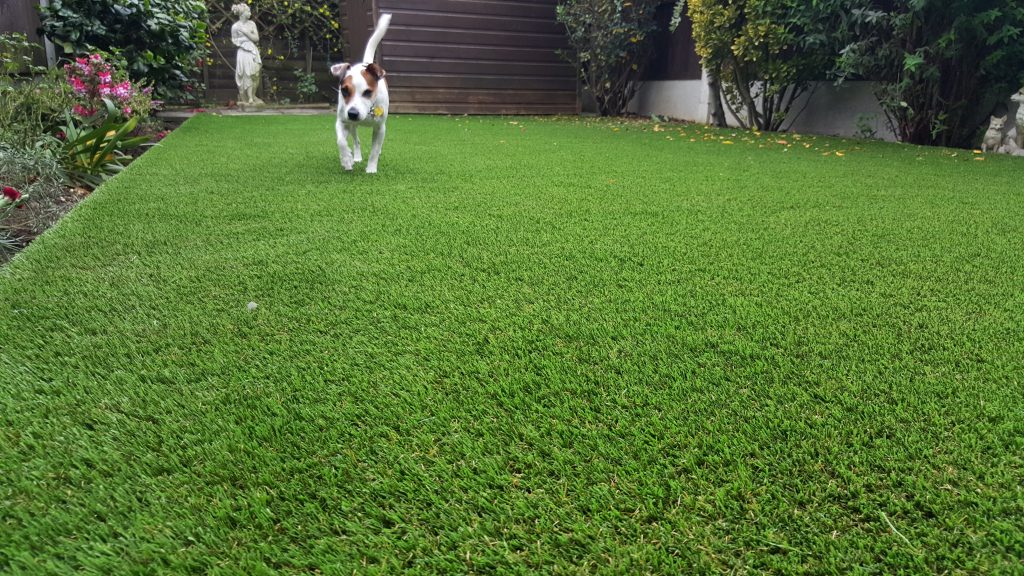DEFINITIVE GUIDE TO ARTIFICIAL TURF MAINTENANCE
How can I remove stains from my artificial grass?
The first rule when dealing with stains is to act quickly.
This is because it will be much easier for you to treat a stain before it has dried or hardened.
Artificial turf is very stain resistant, but you have to be a little careful with the products used on artificial turf.
Some products may be good for treating plastic fibres, but could have an adverse effect on other aspects of your artificial turf, such as the latex backing.
If the stain has hardened, we recommend that you first remove it with a plastic knife or spatula, taking care not to damage the fibres or pull them too hard.
For fresh stains, the first thing to do is to soak up as much of the liquid as possible.
This can be done with a kitchen towel, a clean cloth or absorbents such as cat litter, which can be swept or vacuumed once the liquid has been absorbed.
Depending on the stain, it may also be necessary to apply a household detergent.
We recommend that you use a liquid detergent or even a granulated household detergent.
You can mix it with warm water and apply it to the artificial turf with a sponge or brush.
If you use a brush, always make sure it has synthetic fibres, as metal or wire brushes damage plastic fibres.
You can then thoroughly rinse the affected area with a garden hose.
In the vast majority of cases, this procedure will be sufficient to remove stains caused by the following
-
- Ketchup and mustard
- Soft drinks
- Ice cream
- Alcohol
- Butter
- Tea and coffee
- Blood
However, if you have an oil-based stain, then we recommend that you use a small amount of white spirit.
You will need to be very careful when using white spirit and it should certainly be used sparingly.
To treat your artificial grass with white spirit, apply a small amount to a clean cloth and carefully wipe the affected plastic fibres. This should solve stains caused by the following:
-
- Cooking oil
- Asphalt and tar
- Sun cream
- Painting
- Automotive engine oil
We always recommend that you test the turpentine on an inconspicuous part of your lawn to ensure that no discoloration occurs.
Also, make sure the area is well ventilated and remember that turpentine is extremely flammable, so do not smoke or allow open flames near where these products are used.
For more information on how to remove stains from artificial turf, read our stain removal guide.
How can I remove chewing gum from my artificial grass?
This is a surprisingly common question, but luckily it’s a situation that can be easily resolved.
However, you must be careful not to damage the fibers when trying to remove the gum.
If you pull on the hardened chewing gum, it is very likely that you will also tear off a piece of the artificial turf fibres, which will cause a bald spot in the turf.
To prevent this from happening, we recommend freezing the gum.
Chewing gum removers, which will freeze the gum, can be purchased at most carpet cleaning stores.
Once frozen, you can scrape it off the grass with a plastic knife or spatula.
How can I clean dog waste from artificial turf?
Artificial grass is perfect for dogs and pets
Many people have artificial grass installed because they are tired of their pets turning their lawn into a mud bath.
And it’s understandable that pet owners get frustrated at having to clean up muddy paws every time their dog has been out in the yard.
Artificial grass is ideal for pets, as they cannot destroy it.
They will love running on artificial grass just as much as they do on real grass.
They can also “use” it in exactly the same way, as urine and solids do not damage or discolour the artificial turf.
When it comes to cleaning up dog droppings from your lawn, solids can be picked up in the same way as usual.
And if your synthetic grass has been installed correctly, urine will run off the artificial grass without leaving an odour.
During the summer, we recommend that you occasionally hose down your artificial grass, but you should still do this as part of the regular maintenance process we recommended earlier in this guide.
If your lawn has not been installed on a free draining sub-base, then you may need to purchase one of the many artificial grass cleaning products available on the market that will eliminate urine odor and sanitize your lawn.
How can I remove dog hair from artificial grass?
As part of the 4-step maintenance procedure explained earlier in this article, we recommend brushing your artificial grass.
Regular brushing will ensure that the synthetic fibres remain upright.
Brushing can also be used to remove dog hair build-up on your artificial grass.
Unlike the “cross brushing” method described earlier in this article, where you brush against the pile, we recommend sweeping in the direction of the pile to remove dog hair.
To do this, take a stiff broom or a rake that specialises in artificial grass.
Start at one end of the lawn and in one continuous motion, without lifting the broom off the lawn, push the broom across the lawn.
This technique will remove dog hair.
Another, perhaps easier, alternative is to use a garden vacuum cleaner, but a lawn rake or broom will do the job just as well.
How to remove snow and ice from synthetic turf?
The best way to remove snow and ice is to let it melt and run off naturally.
However, if you need to remove snow from your artificial turf, we recommend removing the top layer with a plastic snow shovel.
The bottom layer can be swept with a broom.
Care should be taken if ice has settled on your artificial turf. Unfortunately, you will not be able to delete it manually.
This is because it can damage or even tear the plastic fibers when trying to remove the ice.
The best method in this case is to let it thaw naturally.
Can heavy objects damage my lawn?
You may want to place items such as a paddling pool, trampoline, football goal or garden furniture on your artificial grass.
Whether these objects damage your lawn depends on the quality of the artificial grass.
If you regularly place heavy objects on your artificial turf, we strongly recommend that you use a turf made of nylon fibres, as they are the strongest.
It is also important to move heavy objects around your lawn regularly to avoid damaging the fibers.
If the grass has been flattened by a heavy object, use an artificial turf rake or stiff broom to stimulate the fibres back to an upright position.
A word of warning about garden furniture:
Always make sure that the legs of chairs and tables do not have sharp edges, as these could cut the artificial grass.
If this happens, it can be repaired with bonding tape and bonding adhesive, but this can be avoided by checking the garden furniture before placing it on the artificial grass.
Can I put a bird feeder on artificial grass?
Although the bird feeder itself will not damage the artificial grass, we recommend avoiding putting bird feeders on your artificial grass.
Bird feeders only encourage bird droppings on artificial grass, which requires regular maintenance to keep the area clean.
Droppings can also attract rodents, which can burrow into the grass around the feeder.
Conclusion
Hopefully this article has answered some of your questions about how to maintain your artificial grass.
As you may have learned in this article, fake grass is not totally “maintenance free”.
Like everything that is exposed to the elements, it requires a certain amount of maintenance.
But fortunately, the maintenance of an artificial turf requires minimal effort on your part.
Be sure to follow the advice in this article and you can expect your artificial turf to be an excellent investment in your property.
Plus, you’ll spend more time relaxing in your garden than working in it.
Children will be kept busy as they will love playing on your fake grass, and dogs will be able to use it as much as they want without damaging it.
With proper maintenance and care, your artificial grass will retain its stunning appearance for a long time.
Artificial grass can really transform your property and make your life easier.
If you are still in the process of choosing the best artificial turf for your needs, you may find our article, 7 Important Considerations When Choosing the Best Artificial Turf, useful.
If you have any questions about artificial grass maintenance or any tips you’d like to share, leave us a comment below as we’d love to hear from you.



